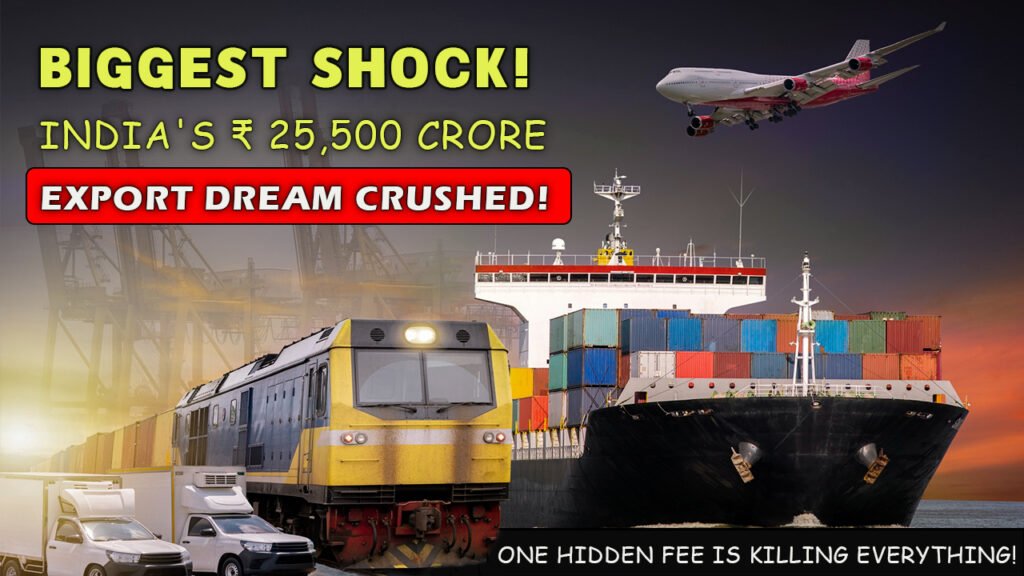
The export mission of 25,500 crores of India was shadowed by high royalty rates on the critical minerals.
The Union government stunned with a big economic announcement that was set to land India squarely into the global strategic supply chains by unveiling a 25,500 crore export mission that is geared towards speeding up high-value exports of the technology-driven sectors. Nevertheless, the news was soon marred by the general panic surrounding the new royalty rates on the critical minerals, with the experts in the industry field stating that the policy might actually become the bottleneck to the ecosystem it is expected to create.
The senior officials believe that the export mission is aimed at increasing the production and competitiveness of India globally in the fields of semiconductors, electric-vehicle batteries, aerospace components, and renewable-energy technologies. Minerals in these sectors, such as lithium, cobalt, nickel and rare earth elements, have also been subjected to a new royalty structure that is rationalised but sharply hiked.
Although the government said the new rates were globally aligned and had to be put in place to ensure the national value capture, the industry response was fast and highly sceptical. Various mining groups and business executives claimed that the royalty slabs, which are perceived to be much greater than in similar economies, will put off individual exploration at a point where India is seeking to cut down on reliance on foreigners.
The timing is a matter of concern. On the one hand, the government is interested in finding and developing these minerals through attracting the involvement of private capital. Conversely, such high royalties will increase operational expenditures on the very first day, stated one of the senior managers of a multinational mining company that is planning to make investments in India.
Analysts also indicated that the exploration of vital minerals is an expensive, risky venture that may limit the interest of investors before the local ecosystem has grown. India is already well behind such countries as Australia, Chile and Canada in exploration depth, data access, and involvement of the private sector -gaps which analysts believe can be expected to increase in the new fiscal regime.
Economists also warned that an aggressive export target coupled with a high royalty would send the market the wrong signal. Increasing the extraction cost would cost India the competitive advantage before entering the international arena. One cannot deal with export ambitions without the support on which they are based. In case the extraction of minerals becomes costly, the cost regime of the downstream industries will definitely increase, said a policy researcher in Delhi.
Although the doubts were on the increase, authorities justified the royalty restructuring by saying that the restructuring is in line with the strategy of the significance of the minerals and in line with the long-term vision of the nation of protecting its national interests. They claimed that the new framework is aimed at making sure that there is transparency, no underestimation and that the mineral-rich states receive sustainable revenues.
Nevertheless, the leaders in the industry argue that the policy will result in unintended consequences unless it is further discussed and adjusted. Some have asked the government to re-adjust the fees or offer incentives to counter the increased load, particularly at the early stages of exploration. An industry body said that to be able to attain mineral security, the policy environment must be initially conducive to investment.
With an ever-growing global rivalry over the most critical minerals, as nations discover mines, form coalitions, and expand their resource bases, the next few months may prove to be fateful. The 25,500-crore export strategy that India is planning does not rely solely on technological capacity but also on the supply and cost of the minerals that modern production is based on.
At the moment, the industry is at the crossroads:
Will India be able to walk the fine line between strategic ambition and fiscal prudence, or will the royalty shock cut off the flow of its export mission even before it can gain momentum?
Source: The Times of India
A digital marketer possessing excellent knowledge and skill in off-page, on page and local SEO is competent in the challenging environment. Hard-working, energetic, and a quick learner for any task delegated. Enthusiastic to learn and constantly upgrade knowledge. Mohit brings over 2 years of experience in crafting content that not only ranks well but also provides valuable insights to readers.
